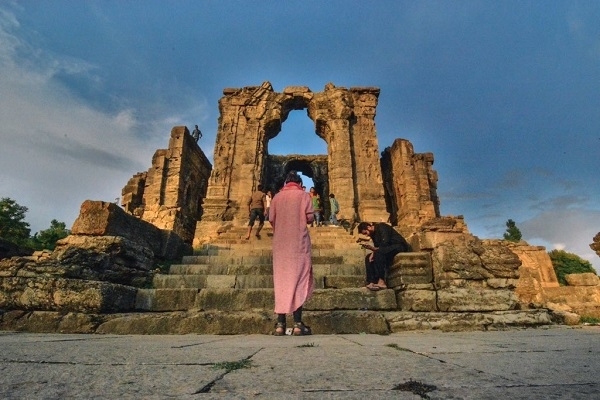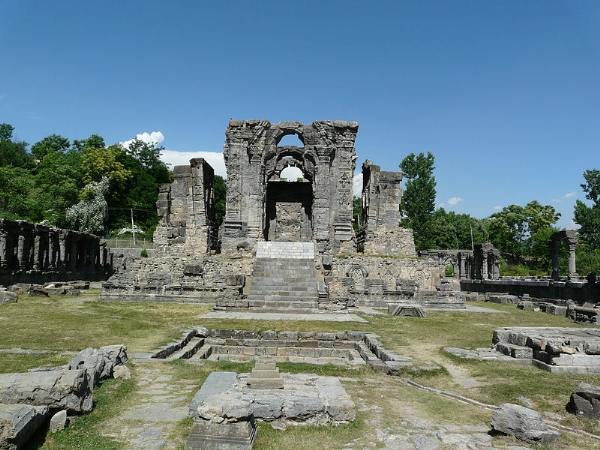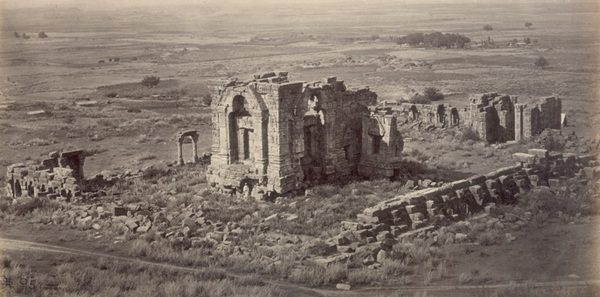Heritage Kashmir: Re-installing fallen rocks of Kashmir's Martand Sun Temple
18 Apr 2022 11:15:39
Efforts are in line for the restoration of the Martand sun temple, that was lost in the chapters of Islamic invasions that took place in the History of Kashmir. But what kind of restoration? Something that any temple seeks unconditionally is people. And that is going to be the first step of the temple's restoration. Kashmir, that was once the largest Kingdom that prevailed in ancient India, extended from Tibet in the east to Iran in the west, and extended down the south up to Dwarka and the province of Odisha.

It was a glorious period when Kashmir a state in far north India shared its borders with the Rashtrakutas who ruled in the Deccan region. The Kashmir under the reign of King Lalitaditya was a paradise in the real sense, that attracted people from long distances merely to witness the wonders of the empire. The Martand Surya Mandir in Kashmir's Anantnag is one such wonder of the Hindu Kashmiri empire that faded away with time, since the only remains of the empire's glory like the temple were vandalized during several invasions.
The abrogation of article 370 unlocked several gates for the original inhabitants of the Kashmir valley, other than the ones already living there, who left Kashmir in masses during the 1990 holocaust that happened targeting the Kashmiri Pandits. But there is something more that has been eased after the abrogation and that is the restoration of the lost glory of the Kashmiri heritage, that was neglected by the state administration earlier. There couldn't be a better start than beginning from the restoration of the Martand Surya Mandir.
On the administrative level, although, there hasn't yet been any vocal development in this regard but signs of restoration of the forgotten Hindu culture of the valley are already observable. In April last year, the Mathadhish of Shri Kashi Math Samsthan, Varanasi, Shrimad Samyamindra Tirtha Swamiji visited the region for the first time and became the first Saraswat brahmin to visit the valley in decades. During his visit, Swamiji also visited the Martand temple, where he chanted surya mantra. Swamiji's visit to the temple possesses cultural significance.
The Martand Sun temple shares a special place not only in the history of Kashmir but also of the Indian subcontinent. There are only three important sun temples in India; one is in Kashmir's Anantnag, second in Gujarat's Modhera and third in Odisha's Konark. Among these three temples, Anantnag's Martand Sun temple is considered to be the most important one for several reasons.
It is the oldest sun temple among the three and also the most grand monumental structure among the three sun temples. Lalitaditya Muktapida's Kashmir was one of the wealthiest kingdoms of the subcontinent. The king had significantly contributed in the development of the Silk route as well, and thus the ancient Kashmir was also connected to the middle eastern world.

The Martand temple is an excellent example of the grandeur of ancient Indian architecture and the development of science in India during the 8th century CE. Although some other Karkota rulers had desired to build the sun temple, it was only King Lalitaditya who fulfilled the completion of such wonder. There are several isolated naturally raised land platforms around the Kashmir valley. The Martand sun temple is built on one such plateau and although much less of the wonder can be witnessed today, even in ruins, but it is believed that the temple complex was stretched across the entire plateau. That is how grand the structure was.
There had been several invasions in an attempt to vandalize the temple but it was only after the invasion of Sultan Sikandar that the temple was largely destroyed. Sikandar had two motives behind the vandalization of the temple. The temples were always the storehouses of any kingdom's wealth.
The sun temple was the most grand and significant temple of the marvelous Karkota dynasty. Historians believe the temple had idols made of gold and silver which were looted during Sultan Sikandar's invasion. Besides, Sikandar also had a different motive underlying the economic factor; Islamization of the society.

Sultan Sikandar of the Shah Mir dynasty, was also known as Sikandar Butshikan. According to the Rajatarangini, Sikandar was a follower of Sufi saint Mir Muhammad Hamadani, who had arrived in Kashmir from present-day Tajikistan. It was Mir Muhammad's idea to create a monotheistic society based on Islam.
The idea of the saint was implemented by Sikandar Butshikan, who had ordered for the destruction of the temple in the 15th century. However, the temple was so grand that it took almost a month for his men to destroy it and yet the temple wasn't completely destroyed. But Sikandar's efforts were enough to end the ancient Hindu heritage for the meanwhile, that the temple represented.
Finally, today the time has come, after several centuries, for people to step ahead for the restoration of the lost heritage, through rituals and traditions. Swami Samyamindra had already laid the foundations by visiting the temple and performing ritual at the Surya Mandir.
-- The article is originally published on Apr 12, 2021
